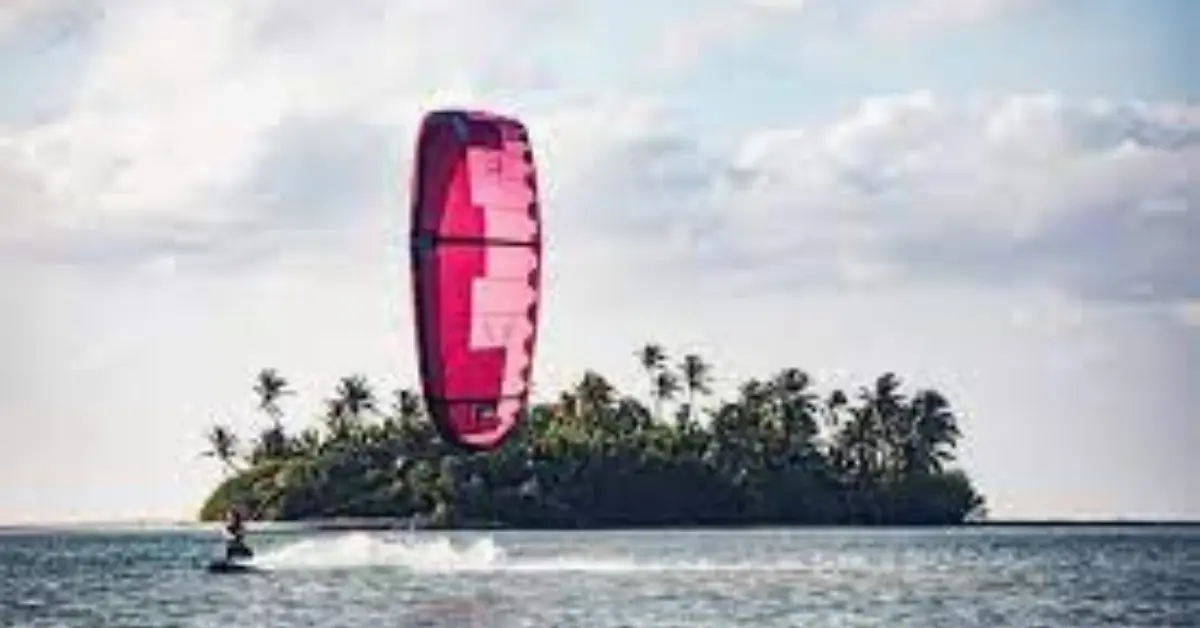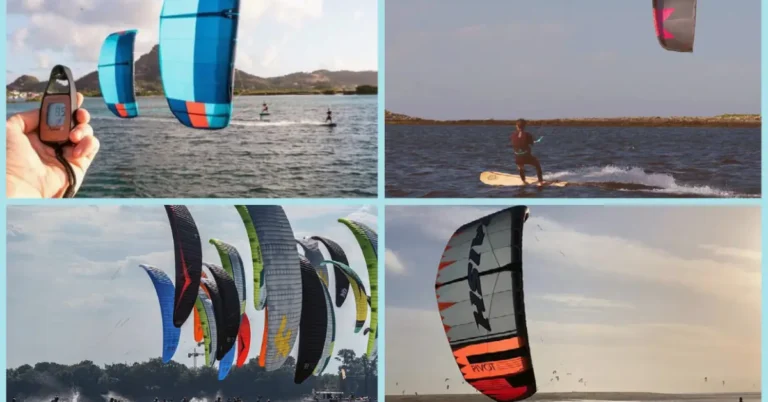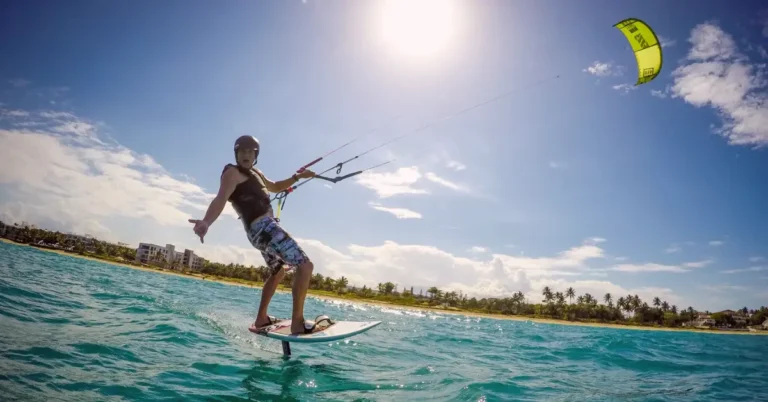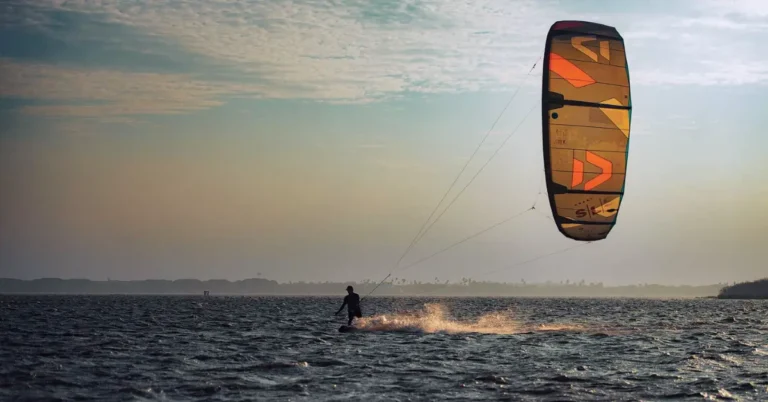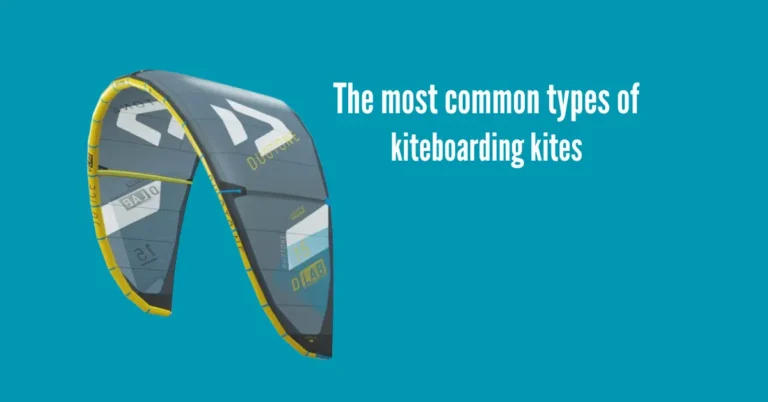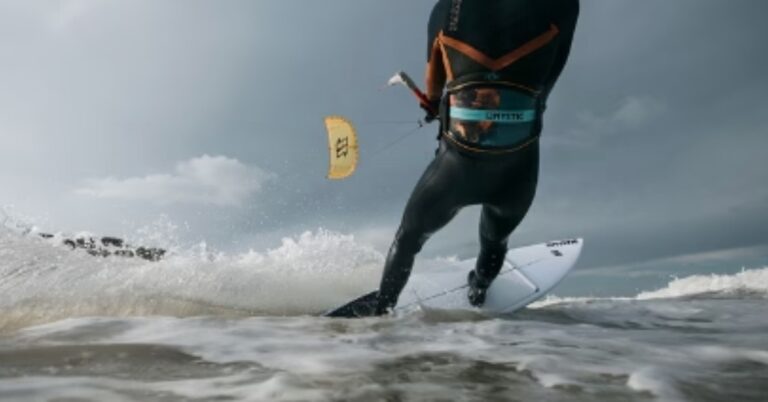What are kitesurfing kites made of?
Kitesurfing kites typically use polyester, a sturdy fabric chosen for its ability to endure the harsh conditions kites face, such as exposure to sun, wind, and water. The leading edge often employs Dacron, a challenging polyester type, with some kites opting for Dacron weave 4-directional laminate, which, while similarly durable, is less common due to its more complex manufacturing process.
Proper care is crucial for kite longevity, including avoiding prolonged sun exposure, refraining from brushing wet sand off the kite, and ensuring thorough drying before storage. Modern kites are complex constructions of interconnected structures and panels combined using advanced stitching techniques. This allows for the creation of high-performance kites tailored to different riding styles.
Also Read: Kitesurfing for Beginners
Polyester Features
Polyester kites can tear more easily than ripstop nylon ones, so it’s crucial to know how to pack them properly to prevent damage. Polyester is a synthetic material made from specific chemicals and has many uses beyond kites, like in bottles, filters, and even musical instruments.
For kites, polyester is excellent because it’s affordable, durable, and has a good memory. However, kites face tough challenges, like falling into water or crashing onto various surfaces. To tackle this, kite companies mix polyester with other materials for better durability and performance.
Imported from Asia
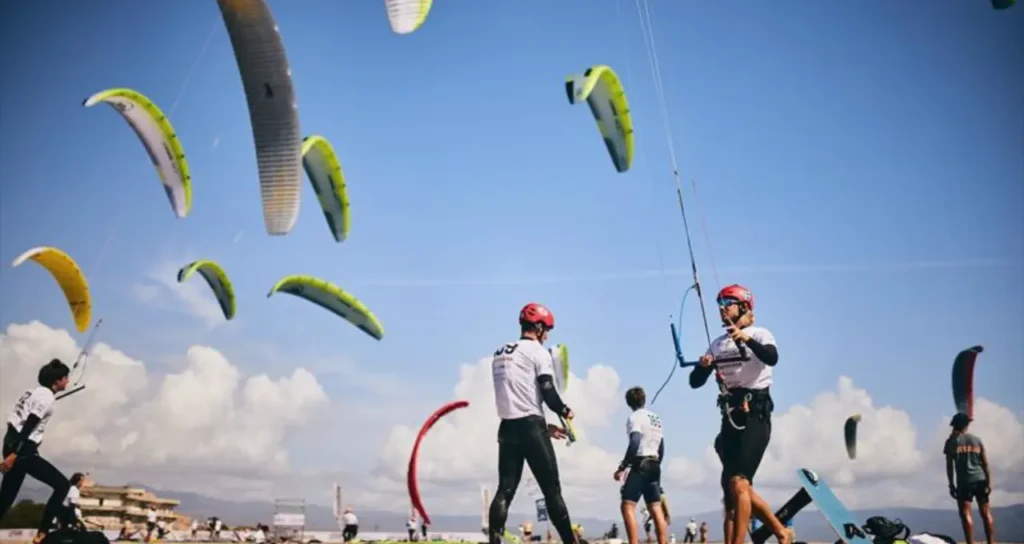
Kite manufacturers reinforce their kites with various materials like Cuben fibre, mylar, and kevlar to make them stronger and more durable. While recycled materials aren’t widely used yet, they will likely be tested in the future. Kites must meet several requirements, such as being lightweight, strong, water-repellent, rigid, UV-resistant, and comfortable for riders.
Major kiteboarding manufacturers import polyester cloth from countries like China, Japan, Sri Lanka, and Thailand. These kites are often pre-assembled before reaching customers, but some brands handle sewing and assembly in-house. Teijin Frontier, a Japanese company, is a leading supplier of kite fabrics, with their Techno Force formula used in over 90% of kites worldwide.
The Best Material for Kitesurfing
The best material for kitesurfing kites is typically polyester. This fabric is chosen for its strength, durability, and resistance to the harsh conditions encountered during kitesurfing, such as exposure to sun, wind, and water.
Polyester has superior UV resistance compared to other materials like ripstop nylon, making it an ideal choice for kitesurfing kites that need to withstand prolonged sun exposure.
How do Kites Fly?
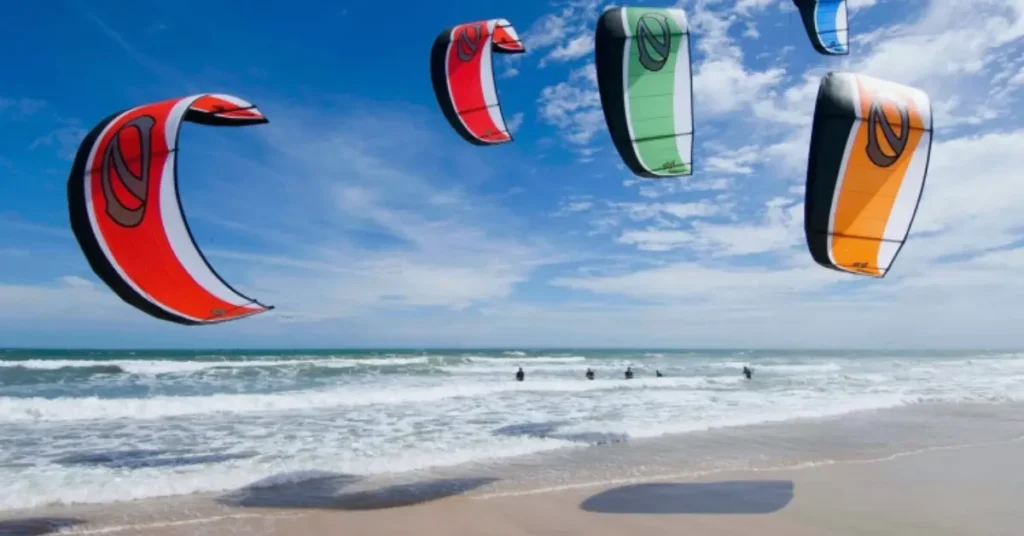
Kitesurfing Body Drag
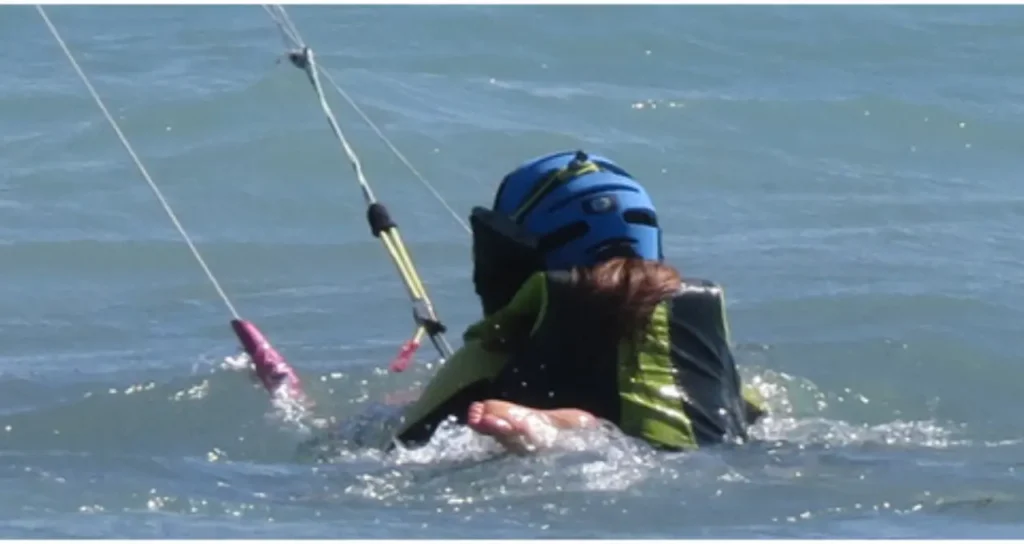
Kitesurfing body drag refers to a technique used by kitesurfers to manoeuvre themselves through the water without using a board. During a body drag, the kitesurfer relies on the kite’s power to pull themselves through the water while holding onto the control bar.
Body dragging serves several purposes in kitesurfing:
There are various types of body drag, including upwind, downwind, and crosswind drags, each serving different purposes depending on the kitesurfer’s goals and the water and wind conditions. Learning proper body dragging techniques is essential to kitesurfing education and safety.
Frequently Asked Questions
Conclusion
Kitesurfing kites are primarily made of polyester, known for their strength and durability against elements like sun, wind, and water. The leading edge often features Dacron, a challenging polyester type, while additional materials like Cuben fibre and mylar may be added for reinforcement. Proper maintenance is essential for kite longevity.
Despite the misconception that ripstop nylon is commonly used, polyester remains the dominant material choice due to its superior UV resistance. Kitesurfing kites continue to evolve, with advancements in materials and construction techniques ensuring high performance and durability in challenging conditions.
